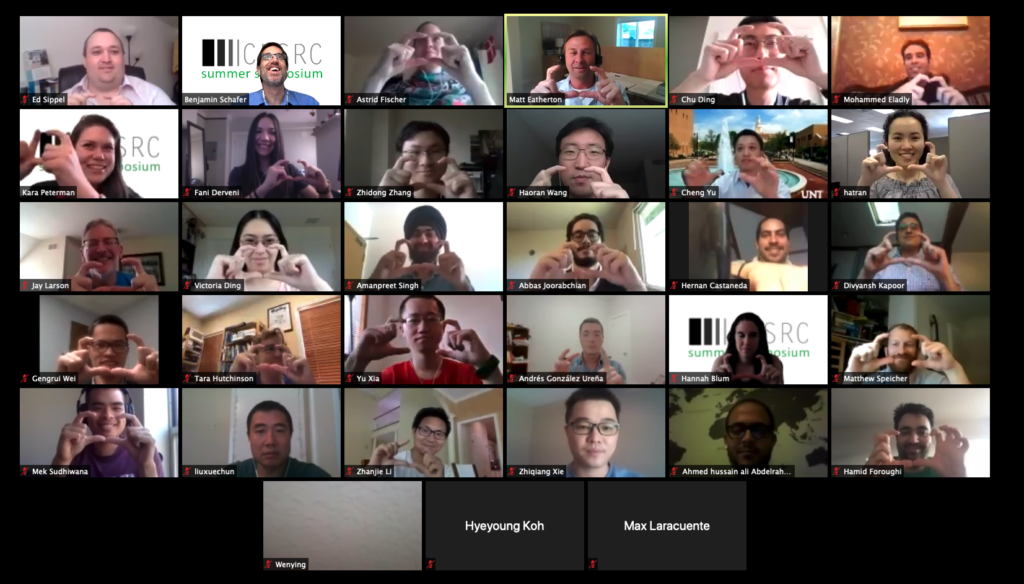CFSRC student and postdoctoral researchers shared their latest research at the CFSRC Summer Symposium on 26 and 27 May 2020. Thirty-four participants enjoyed a deep dive into cold-formed steel and related research – focusing the first day on earthquake engineering and the second day on broader topics in thin-walled structural research. The Symposium was held online and hosted by CFSRC Director Ben Schafer and moderated by CFSRC Investigators: Hannah Blum, Matt Eatherton, Kara Peterman, and Cheng Yu. In addition to the Zoom meeting an active conversation was maintained throughout the symposium on the cfsrc slack page.
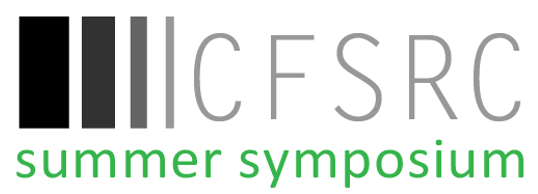
The idea for the Symposium was borne out of the loss of conferences and sharing of research due to the global pandemic. The notion was enthusiastically received by the CFSRC investigators and led to a large degree of interest from the CFSRC student researchers. The interest from the students led to an exceptional list of talks:
| First Name | Last Name | Title of Talk |
| Amanpreet | Singh | Lateral Response of Cold-Formed Steel Framed Steel Sheathed In-line Wall Systems Detailed for Mid-Rise Buildings |
| Andrés | González Ureña | Earthquake-Resistant Design of Frames with Intentionally-Eccentric HSS Braces |
| Astrid W | Fischer | Force and Ductility Demands Found in Parametric Study of Inelastic Time History Analysis of Single-Story Mass-Spring Model |
| Chen | Wang | Study on Seismic Vulnerability of Conventional Concentrically Braced Frames |
| Fani | Derveni | Impact of Fastener Spacing on the Behavior of Cold-Formed Steel Shear Walls Sheathed with Fiber Cement Board and Composite Steel-Gypsum Board |
| Hamid | Foroughi | Seismic Response of Steel Diaphragm for 3D Archetype Buildings with SCBF:Bare Deck vs. Composite Deck |
| Maryam | Soltani | Investigaton of Lateral Strength and Image-Based Buckling Width Analysis of the Cold-Formed Steel Sheathed Shear Walls |
| Mohamed | Afifi | Slotted-Hidden-Gap HSS Brace connection for seismic applications |
| Raul | Avellaneda | Lessons Learned from Cyclic Testing of Composite Concrete on Metal Deck Diaphragms |
| Xiang | Wang | Earthquake and Post-earthquake Fire Testing of a Mid-rise Cold-formed Steel Framed Building: Results and Design Implications. |
| Zhidong | Zhang | Cyclic Performance of Steel Sheet Connections for CFS Steel Sheet Shear Walls |
| Abbas | Joorabchian | Numerical investigation of the impact of bearing condition on the axial behavior of variable-height cold-formed steel stud wall assemblies |
| Chu | Ding | Ductility Demand of CFS Building for Advanced High Strength Steel (AHSS) |
| Divyansh | Kapoor | Impact of gravity detailing on thermal performance of cold-formed steel wall assemblies |
| Ed | Sippel | Analysis of non-symmetric cross-sections relative to the provisions of AISC 360-16 |
| Gengrui | Wei | Experimental Study on the In-plane behavior of Standing Seam Roof Assembly and Its Use in Lateral Bracing of Rafters |
| Haoran | Wang | Uncertainty quantification of load carying capaity in thin shell structures using topology-aware stochastic models |
| Hernan | Castaneda | Characterizing Wall-to-Diaphragm Moment-Rotation Response in Cold-Formed Steel Systems |
| Tran | Han | Clip Angle Design – Phase III |
| Mohammed | Eladly | Simplified FE modeling of stainless steel beam-to-column bolted connections |
| Yu | Xia | Geometric imperfection measurements of cold-formed steel members using a portable non-contact 3D laser scanner |
| Hyeyoung | Koh | Hole-drilling method to determine residual stresses in advanced high-strength cold-formed steel members |
All of the talks were excellent, and of course some highlights stood out as well. This timeline slide from Mohamed Afifi on a specially detailed HSS brace was a first day favorite.
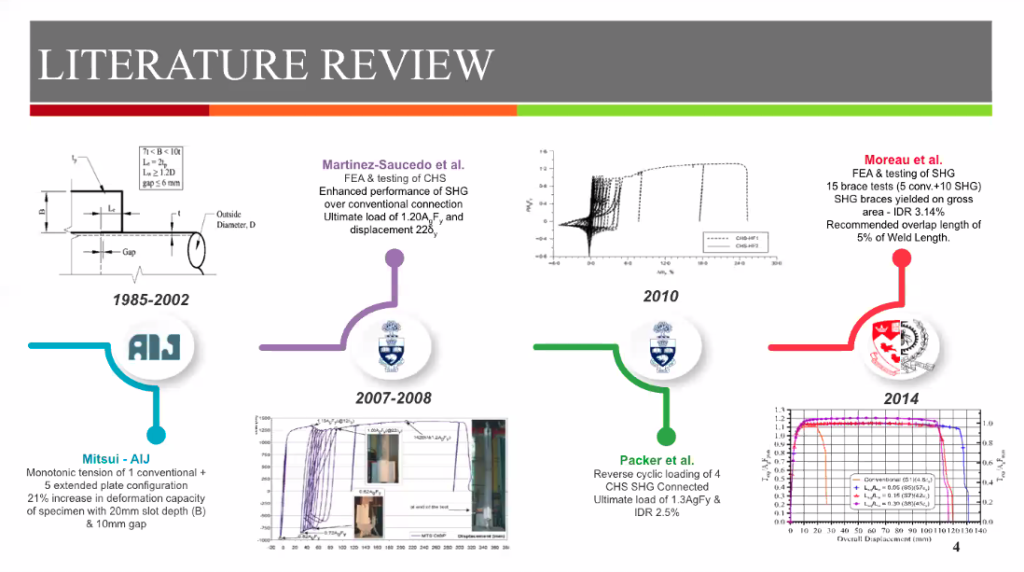
As was this excellent summary of recent fastener tests by Fani Derveni. Six small multiple response slides on the same slide – was no problem in the online format – so much information was packed into these 10 minute talks.
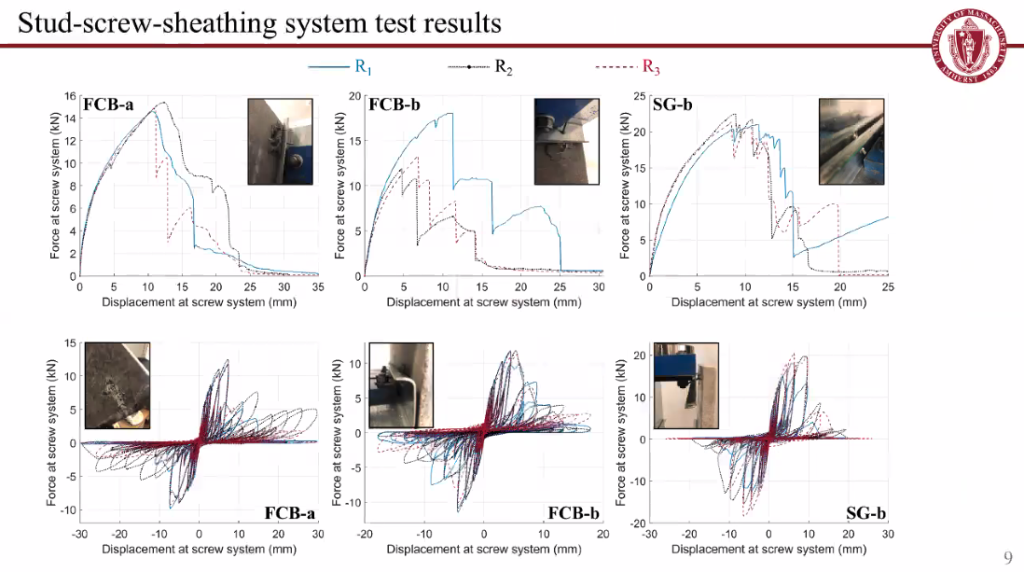
Lots of wonderful talks on Day 2 as well, it is unfair to mention just a few, but everyone was interested in Yu Xia’s Artec scanner and Haoran Wang’s talk on imperfection sensitivity in cylindrical shells was especially nice, here’s just a tidbit:
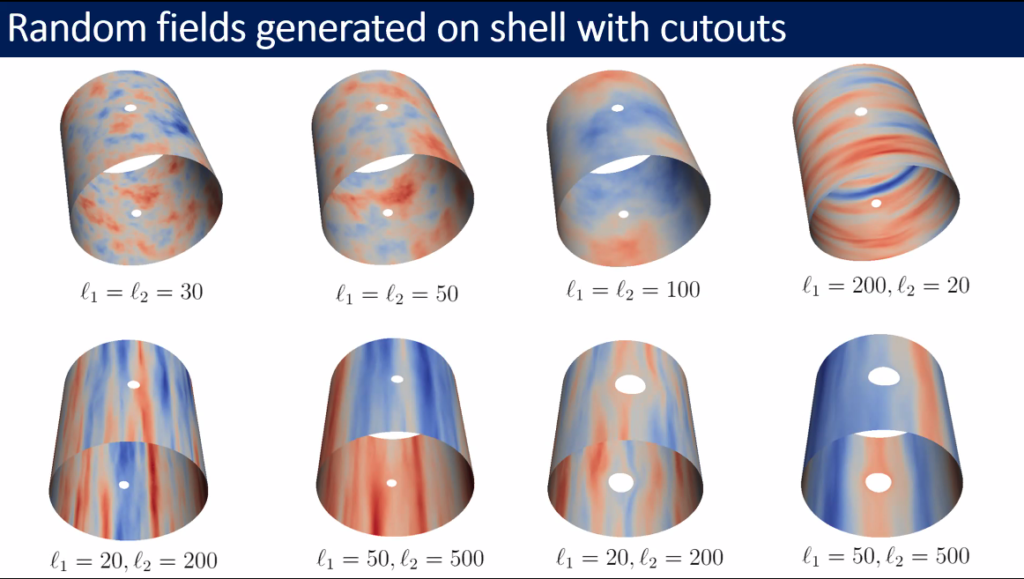
The online format was new for everyone involved but had a number of interesting advantages. For one, a large group from across the U.S. (and even some students that were currently abroad) were all able to participate. Second, the audio quality was great and the visual quality even better – it was easy to see fine details on the presenter’s slides – details that would be lost in a typical live conference setting with a projector. One attendee noted that it was nice to see everyone’s faces during the talks – instead of the back of people’s heads.
The Symposium ended with an homage to the most ubiquitous of cold-formed steel members, the humble lipped channel:
